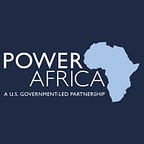Promoting Productive Use of Electricity in Uganda
This is Part 1 of a three-part series on Power Africa’s role in expanding access to electricity in Uganda, focused on communities in the Ssese Islands, Lake Victoria.
Most days, the fishing communities of Uganda’s Ssese Islands are in a race against time.
It starts the moment the fishers haul nets full of tilapia and Nile perch onto their boats and ends only when they sell their catch at the mainland markets, some 50 kilometers across Lake Victoria. If the clock runs out, their catch will spoil, and their income will be lost.
Food waste in Uganda is a huge problem. As much as 40 percent of post-harvest production, whether crops or fish, goes bad before it reaches the market. The biggest challenge for fishing communities is a lack of cold storage.
Fishers from Bukasa Island relied on expensive ice transported from the mainland. Andrew Ssentongo, Founder of GRS Commodities, a local off-grid energy company, explains that the problem had become so acute that, “by the time the boat arrived back at the island at 6 p.m., 30 percent of the ice loaded onto it at 2 p.m. had already melted.”
There were no alternatives. With only a single diesel generator on the island, the fishers were forced to use expensive diesel and inefficient ice to keep their catch cold. In a country where approximately 88 percent of the population lives on less than $5.50 a day, electricity can really boost economic livelihoods.
Electricity can provide refrigeration and cold storage solutions to improve the economic livelihoods of not only fishers living in island communities. Farmers also suffer from an inability to irrigate fields, which hinders crop yields and makes farms highly susceptible to changing weather. At the same time, a shortage of rural agri-processors, such as milling machines that require electricity, forces smallholder farmers to travel long distances to process their crops.
Whether for an irrigation system, milling machine, refrigerator or ice-maker, solar-powered productive use of energy (PUE) applications — any technology that uses energy as a direct input in the production of goods or services — have enormous potential to improve the lives of those who live and work in agricultural communities without access to the national grid.
USAID’s Mission in Uganda partnered with USAID INVEST, an initiative that mobilizes private capital for development results, to better understand the promise and challenges of scaling PUE technologies in Uganda. Working in partnership with Open Capital, a management consulting and financial advisory firm focused on Africa, USAID found that when coupled with the right enabling environment, off-grid solar companies can develop and market innovative solar PUE technologies with the potential to transform the off-grid economy in Uganda.
Read Parts 2 and 3 of the series to explore how USAID and Power Africa are expanding access to electricity and promoting productive uses of energy in Uganda.
